The Disaster at Mazuma
Summer 2024
A cloudburst wipes a Nevada community off the map.

BY CORY MUNSON
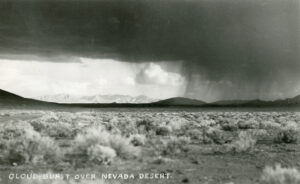
July 18, 1912
At around 5 p.m., storm clouds formed over the Seven Troughs Range, 30 miles northwest of Lovelock. Light rain sprinkled over the foothills as a confused breeze whipped up dust eddies. In the little mining towns spread along the range—Seven Troughs, Vernon, and Mazuma—people headed home for dinner, thankful for a respite from the July heat.
THE CLOUDBURST
Then, as if the range was inhaling the surrounding summer evening, a humid wind blasted up from the valley toward the mountain peaks. The storm clouds shot skyward, elongating until they resembled a black column. Within moments, the ugly thing hit critical mass, and stormwater poured out as if from a spilt bucket.

The deluge fell all at once, washing down Burnt Canyon and taking the life of Julia Foncannon as she sat at home. Downslope, the flood emptied into Seven Troughs Canyon where the bustling, young town of the same name braced for impact. Fortunately, Seven Troughs sat where the canyon was widest, and the floodwater lowered to ankle height. It passed through town and uprooted a few buildings but caused no significant damage or loss of life.
Ed Kalenbauch watched the flood from his second-story office. He rushed to the phone, knowing the canyon narrowed dramatically further down. At the other end of that chute would be Mazuma. As soon as Kalenbauch picked up the phone, lightning killed the line.
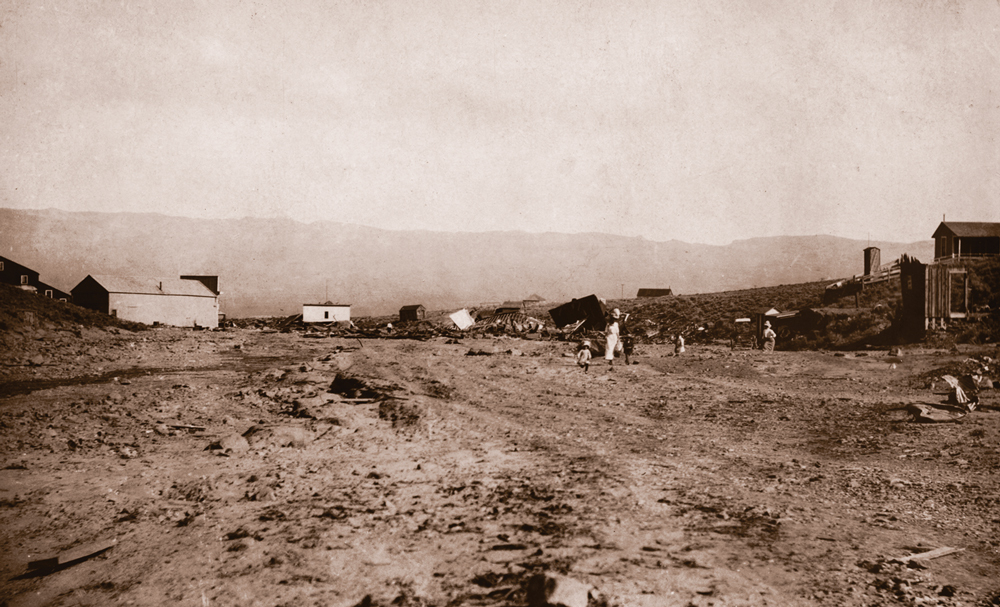

MAZUMA DESTROYED
Sybil Huntington was halfway to the bakery on Mazuma’s main street when the breeze began kicking up dust. Remembering that she’d left her windows open, she returned to her hillside home.
Just before reaching the gate, she heard a roar from the canyon and turned to watch a 20-foot-tall wave crash over Mazuma. Years later, she remembered that it was like the town was made of cardboard.
When the flood hit Mazuma, Percy Gillespie, the superintendent’s son, was playing with George and Jimmy Kehoe. Nearby, Mrs. Reese was chatting with Mrs. Kehoe, who held her 19-month-old son Ronnie. The water instantly swept them all away. Downstream, Mike Whalen stepped out of his cabin just in time to see Ronnie pass by. He dove in to rescue the toddler, but neither resurfaced.
The raging river hit the post office, where Maud Ruddel—the Canadian-born postmistress—was assisting Mrs. McLean. Ruddel was later found 2 miles downstream, nails and wreckage tangled in her hair. Nearby, Mr. and Mrs. Trenchard were swept away and wouldn’t be discovered until the next day. Mr. Trenchard later succumbed to his injuries, but his wife survived.
Nearly every structure was carried away, some debris going as far as a mile down the valley. The dance hall managed to turn around 180 degrees before crumbling. The Coalition Mining Plant—a cyanide factory—tore off its concrete base, and its vault containing $20,000 broke open.
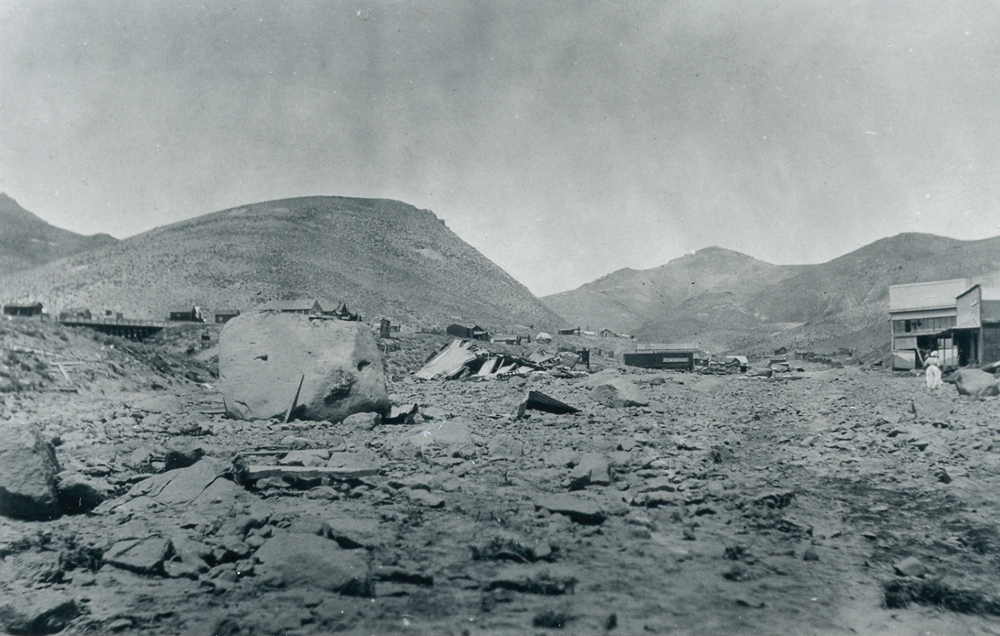
 AFTER THE STORM
AFTER THE STORM
Word of the damage soon reached nearby Lovelock. Within the hour, a caravan of early automobiles raced north carrying doctors, nurses, aid workers, supplies, and provisions. Three undertakers were dispatched out of Reno.
The road to Mazuma had turned into a sticky, muddy soup, and vehicles had to make a wide detour. By the time help arrived, it was well after sunset. Rescuers searched for survivors by lantern light.
In total, at least 11 people died—one-tenth of the town’s population. All that remained was the two-story hotel, the general store, and a handful of cabins. The “Tonopah Daily Bonanza” called it the worst disaster Nevada had faced in many years.
The “White Pine News” said that, in retrospect, disaster was inevitable, “… encompassed as [Mazuma] was by high mountain walls, resulted in its annihilation … when the confided waters rushed down the canyon.”
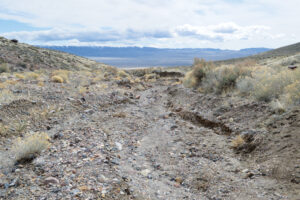
Later that week, Nevada Governor Tasker Oddie issued a statement: “The catastrophe is so great and the needs of relief so urgent that, as president of the Red Cross of Nevada, I urge upon the people of the state the duty of generous and immediate action.”
Donations poured in from across the country, and Nevada towns competed to see who could contribute the most to aid the displaced residents.
Despite the goodwill, Mazuma would never recover. On August 2, less than a month after the storm, another cloudburst appeared over the range. A 5-foot wave flew down the canyon, inundating Seven Troughs and washed out over what remained of Mazuma.
The survivors had seen enough. They collected their remaining possessions and left the town forever.
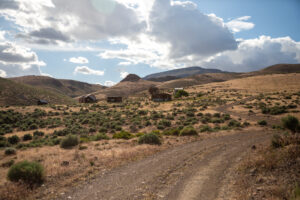
TODAY
In 1955, the “Nevada State Journal” reported nothing was left of the town except for rubble: Mazuma had returned to the desert. There was only a trio of hardly legible stones in the cemetery etched with the names George, Jimmy, and Ronnie Kehoe.
Over the years, the town of Seven Troughs also disappeared. However, ghost towners still have a good reason to visit the area.
In the late 1920s, a company in Seven Troughs constructed a camp about a mile south of Mazuma as a base of operation for drilling a drainage tunnel through the mountain. After boring a little more than 2 miles, wet ground caused drilling costs to soar. All work ceased in 1934.
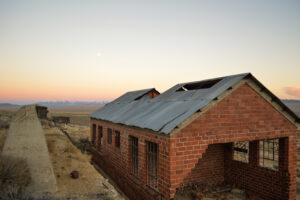
Several impressive structures still stand at the site—helpfully called Tunnel Camp, or Tunnel—including a large red brick building, a stamp mill, wooden cabins, and mine tailings.


